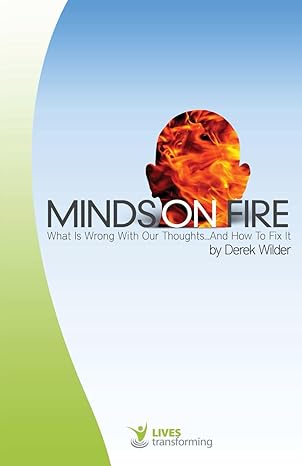Daniel Hays asserts that Christians should utilize the Old Testament Law by interpreting and applying it based on an approach he refers to as principlism.[1] The traditional approach of interpreting the Mosaic Law consists of classifying laws into categories of moral, civil, and ceremonial.[2] However, Hays contends the traditional approach lacks textual support, neglects the narrative context, and discounts assimilation with New Covenant constructs.[3] Alternatively, Hays’ approach of principlism attempts to mitigate the weaknesses identified in the traditional approach by discovering the timeless truths in the Old Testament Law and then applying the truths to modern-day Christians.
[4]Hays’ approach includes five chronological steps: (1) identify the specific law’s relation to the original audience, (2) differentiate between the ancient and modern readers, (3) identify the timeless truths, (4) associate the truth with the New Testament, and (5) determine the life application.[5] The strengths of principlism include treating the entire Old Testament as inspired, ignoring categories not biblically supported, interpreting the Old Testament within its narrative context, highlighting the theological implications of the Law, and integrating the Law’s meaning into a New Testament perspective.[6] Hays also suggests that a strength of principlism is its simplicity and consistency, but admits a weakness may be its oversimplification.[7] The author correctly identifies simplicity as a strength of principlism, but appears to underestimate the weakness of oversimplification, especially regarding how the New Testament may modify the identified universal principle. For example, Hays correlates Leviticus 5:2 with the New Testament by stating, “Stay away from sinful actions and impure thoughts because the holy God lives within you.”[8] If the implication is that Christians must appropriately manage sin because God is inside, then the correlation quickly deters from orthodoxy because, as Millard Erickson points out, sanctification “is something done by God, not something we do ourselves.”
[9] However, if the universal principle implies that God, in the form of the Holy Spirit within, empowers healthy actions and thoughts, then the correlation remains orthodox. In other words, oversimplification may go beyond a weakness of principlism and quickly slide into misinterpretation that risks the same arbitrary, and potentially harmful, results as the traditional method of interpretation.
The article contributed to an understanding of applying the Old Testament Law to today in three ways. First, the article identified the risks of the traditional approach, which are instrumental in averting potential hermeneutical mishaps. Second, the article provided an alternative approach that appears more relevant to modern believers. Finally, the article’s analysis highlighted the importance of carefully correlating the Old Testament Law to the New Testament in order to avoid interpretative pitfalls.
Explain how we reconcile the two New Testament teachings that the Old Testament law is eternal and will never pass away (Matthew 5:17) and that believers are no longer under the law (Romans 7:1 – 6; Galatians 3 – 4).
In Matthew 5:17 Jesus states, “Do not think that I came to abolish the Law or the Prophets; I did not come to abolish but to fulfill.”[10] However, in Romans 7:6 Paul states, “But now we have been released from the Law, having died to that by which we were bound, so that we serve in newness of the Spirit and not in oldness of the letter.” Furthermore, when referring to the Law as a tutor in Galatians 3:25 Paul also states, “But now that faith has come, we are no longer under a tutor.” The question is how to reconcile the fact that Christ states He did not abolish the Law, yet Paul states that the New Covenant releases believers from the Law and that believers are no longer under the Law.
Hays suggests the key to understanding Matthew 5:17 is to properly define the word “fulfill,” which normally means, “to bring to its intended meaning.”[11] Louis Barbieri correctly explains that Jesus fulfilled the Law in the sense that he perfectly obeyed the Law and fulfilled the message and predictions of the Prophets.[12] However, the concept of “bringing the Law to its intended meaning” moves beyond the Barbieri’s assertion that Jesus perfectly followed the Law. Craig Blomberg summarizes the extended meaning by stating, “Every Old Testament text must be viewed in light of Jesus’s person and ministry, and the changes introduced by the New Covenant he inaugurated.”[13] Namely, the interpretation of Old Testament texts must consider that Jesus at times restated, modified, intensified, changed, and even abrogated the laws of the Hebrew Scriptures.[14] The reason that Jesus’s fulfillment of the Law resulted in significant modifications, according to Barbieri, is that the type of righteousness the teachers of the Law were pursuing “was insufficient for entrance into the kingdom Jesus was offering.”[15] In other words, the type of righteousness demanded by Jesus was an internal righteousness through faith, as opposed to an external righteousness through the Law (Romans 3:21-22).[16] Accordingly, Paul appropriately explains that believers have been released from the Law and are no longer under the Law not because the Law is abolished, but because the Law has developed through salvation history from the bondage of an external righteousness to the freedom of an internal righteousness provided as a gift from God through faith in Christ.
Select one of the OT passages below and describe how you can apply the law to your own life, using Hays’ approach of “principlism.” Be as detailed and specific as possible.
Hays’ approach of principlism to interpret Old Testament passages includes five steps. The first step is to identify what the passage meant to the original audience. Regarding the blessings in Leviticus 26:1-11, Gordon Wenham notes that vassal treaties in the ancient Near East often concluded with a list of potential blessings and curses tied to whether the party followed the guidelines of the treaty.[17] Accordingly, Israel would have a general understanding of the purpose of Leviticus 26 within their covenant relationship with God. However, William Barrick more specifically identifies the context within the Israelite community by explaining that God provides the both blessings and curses in Leviticus 26 to prepare the Israelites while at Sinai for their journey through the wilderness and eventual entrance into the Promised Land.[18]
The second step of principlism is to identify the differences between the original audience and modern-day believers. Wenham organizes the blessings in Leviticus 26 into three categories available to the Israelites in the wilderness: (1) good harvests for food supply, (2) peace with other nations, and (3) the presence of God in the tabernacle.[19] However, Christians today are no longer in the wilderness of the ancient Near East or in preparation of entering the Promised Land.
Principlism’s third step is to identify the universal principle in the text. The universal principle in Leviticus 26:1-11 is that obediently trusting God as Lord provides the blessings of security, peace, and God’s presence. Alternatively, idolatry negates these blessings. Mark Rooker notes the importance of the first two verses of Leviticus 26, which address the issue of idolatry, by suggesting they may summarize the entire Law of God.[20] The next nine verses focus on placing trust in God rather than idols, which is universally applicable to both the Old Testament and the New Testament (see Leviticus 26:3-11; 1 Corinthians 10:14).
The fourth step of principlism is to correlate the universal principle to the New Testament by identifying how the New Covenant message may modify or qualify the principle. Although believers are no longer living in the ancient Near East wandering in the wilderness in preparation for entering the Promised Land, the risks of idolatry and the blessings of security, peace, and God’s presence remain available. However, each of the three blessings modify within a New Testament perspective. First, in contrast to the external blessing of food in the wilderness, the New Testament recasts the issue as an internal antidote to worry when one places trust in God for sustenance. Jesus illuminates the New Testament concept by stating, “For this reason I say to you, do not be worried about your life, as to what you will eat or what you will drink; nor for your body, as to what you will put on. Is not life more than food and the body more than clothing?” (Matthew 6:25). Next, instead of external peace from enemy nations or wild beasts in Canaan, God promises New Testament believers internal peace. Jesus explains the New Testament perspective by stating, “These things I have spoken to you, so that in Me you may have peace. In the world you have tribulation, but take courage; I have overcome the world” (John 16:33). In other words, in sharp contrast to blessings that guarantee worldly success or prosperity, Jesus promises peace even as believers face various challenges in the world. Finally, Wenham explains that a more literal translation of Leviticus 26:11, which refers to the blessing that God dwells among the Israelites, would be, “I shall give my tabernacle among you.”[21] Accordingly, rather than experiencing the presence of God residing externally in a tabernacle, New Testament believers experience God residing internally in the form of the Holy Spirit. Jesus highlights the New Testament context of the blessing when communicating the great commission by stating, “I am with you always, even to the end of the age” (Matthew 28:20). Without question, all the blessings identified in Leviticus 26:1-11 are available to New Testament believers, but each one develops from an external blessing to an internal blessing. Unfortunately, as noted in Leviticus 26:1, idolatry can void all three of these blessings within both an Old Testament and New Testament framework.
The final step of principlism is to apply the modified universal principle to life. Again, the universal principle in Leviticus 26:1-11 is that obediently trusting God as Lord provides the blessings of security, peace, and God’s presence. Alternatively, idolatry negates these blessings. In my life, I struggle with anxiety. When my work becomes my idol, I become anxious about my performance and relinquish the security, peace, and the presence that God offers. When my family becomes my idol, I become anxious about my family’s behavior and relinquish the blessings God offers. When my own body becomes my idol, I become anxious about my health and, again, relinquish the blessings of God. Certainly, God promises never to leave me, but when I put my trust in the idols of my work, family, and health, instead of God, the internal blessings of security, peace, and the presence of God vanquish into an abyss of insecurity, anxiety, and the perception, not the reality, that God is absent.
_________________________________________
[1]. Daniel J. Hays, “Applying the Old Testament Law Today,” Bibliotheca Sacra 158, no. 629 (January 2001): 30.
[2]. Ibid., 22.
[3]. Ibid., 30.
[4]. Ibid., 35.
[5]. Ibid., 31–33.
[6]. Ibid., 30.
[7]. Ibid., 31.
[8]. Ibid., 35.
[9]. Millard J. Erickson, Christian Theology, 2nd ed. (Grand Rapids: Baker Academic, 2007), 982. Also see 1 Thess. 5:23).
[10]. Unless otherwise noted, all biblical passages referenced are in the New American Standard Bible (La Habra, CA: Lockman Foundation, 1995).
[11]. Hays, “Applying the Old Testament Law Today,” 29.
[12]. Louis A. Barbieri, Matthew, The Bible Knowledge Commentary: New Testament: An Exposition of the Scriptures by Dallas Seminary Faculty, ed. John F. Walvoord and Roy B. Zuck (Colorado Springs: David C. Cook, 1983), 30.
[13]. Craig Blomberg, Matthew, The New American Commentary, vol. 22 (Nashville: Broadman & Holman, 1992), 104.
[14]. Hays, “Applying the Old Testament Law Today,” 29.
[15]. Barbieri, Matthew, The Bible Knowledge Commentary: New Testament: An Exposition of the Scriptures by Dallas Seminary Faculty, 30.
[16]. Ibid.
[17]. Gordon J. Wenham, The Book of Leviticus, The New International Commentary on the Old Testament (Grand Rapids: Wm. B. Eerdmans, 1979), 29–30.
[18]. William D. Barrick, “Inter-Covenantal Truth and Relevance: Leviticus 26 and the Biblical Covenants,” Master’s Seminary Journal 21, no. 1 (March 2010): 88.
[19]. Wenham, The Book of Leviticus, The New International Commentary on the Old Testament, 329–30.
[20]. Mark Rooker, Leviticus, The New American Commentary, vol. 3a (Nashville: Broadman & Holman, 2000), 360.
[21]. Wenham, The Book of Leviticus, The New International Commentary on the Old Testament, 330.
Bibliography
- Barbieri, Louis A. Matthew. The Bible Knowledge Commentary: New Testament: An Exposition of the Scriptures by Dallas Seminary Faculty. Edited by John F. Walvoord and Roy B. Zuck. Colorado Springs: David C. Cook, 1983.
- Barrick, William D. “Inter-Covenantal Truth and Relevance: Leviticus 26 and the Biblical Covenants.” Master’s Seminary Journal 21, no. 1 (March 2010): 81–102.
- Blomberg, Craig. Matthew. The New American Commentary, vol. 22. Nashville: Broadman & Holman, 1992.
- Erickson, Millard J. Christian Theology. 2nd ed. Grand Rapids: Baker Academic, 2007.
- Hays, Daniel J. “Applying the Old Testament Law Today.” Bibliotheca Sacra 158, no. 629 (January 2001): 21–35.
- Rooker, Mark. Leviticus. The New American Commentary, vol. 3a. Nashville: Broadman & Holman, 2000.
- Wenham, Gordon J. The Book of Leviticus. The New International Commentary on the Old Testament. Grand Rapids: Wm. B. Eerdmans, 1979.



